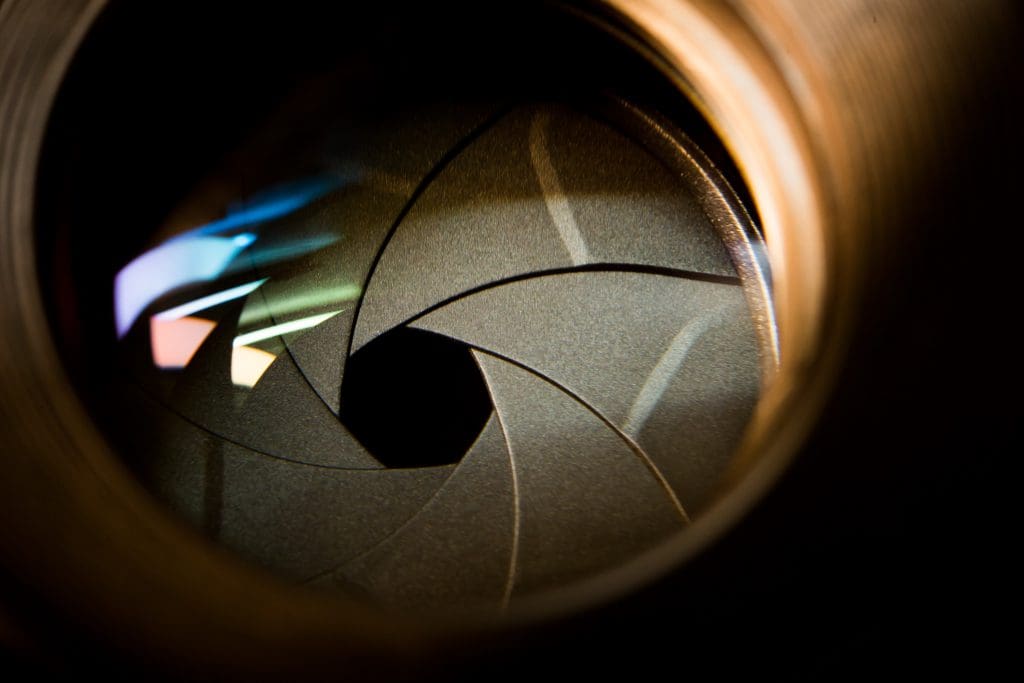Almost any DSLR provides two intermediary operating modes between the full automatic Auto Mode and the full manual Manual Mode. They are Aperture Priority Mode and Shutter Speed Priority Mode.
Aperture Priority Mode is usually marked with an A or Av symbol. It’s a semi-automatic mode that allows you to set the aperture while the camera automatically adjusts the shutter speed. Aperture Priority Mode is more time-saving than Manual Mode and gives you more control than Auto Mode. Like Shutter Speed Priority Mode, it’s a compromise between speed and creativity.
When to use Aperture Priority Mode?
To know when to use Aperture Priority Mode you need to know about aperture and depth of field.
Aperture controls the size of the opening that allows light to enter the camera. It’s measured in f-stops (or f-numbers). The larger the aperture is, the smaller the f-stop. Most lenses provide a range of eight apertures, usually between f/4 and f/22. More than the amount of light that enters the camera, the aperture is known to dictate the depth of field.
The depth of field represents the area of the image that’s in focus. It’s influenced by aperture, sensor size, focal length, and the distance between camera and subject. The sensor size is given by the camera and is fixed. The focal length is given by the lens and can be fixed (prime lenses) or variable (zoom lenses). The distance between camera and subject is given by the environment: it’s small and limited for real-estate pictures, large and limited for landscapes, variable for scenes you create yourself. Aperture is the only influencing factor that can be adjusted without much trouble. It also has the most visible effect.
Aperture Priority is very useful
Therefore, Aperture Priority Mode is very useful when you want to use a specific depth of field and need to organize the entire composition around it. For example, you may want to photograph people and use a shallow depth of field to emphasize their faces. You may want to photograph a beautiful landscape and use a deep depth of field to have everything in focus. Or you simply don’t know the exact depth of field that will fit a busy background and want to experiment with different apertures. When the depth of field is your purpose, use Aperture Priority Mode and let the camera deal with shutter speed to complement your aperture of choice.
Image by Julius Silver from Pixabay
Tips for achieving the right exposure
Aperture Priority Mode gives you the freedom to focus on depth of field through the aperture. However, you need to keep an eye on exposure too. If you choose a large aperture to have a shallow depth of field, you’ll allow more light to enter the camera. For a very bright scene, this may deliver overexposed pictures. On the other hand, a small aperture gives a deep depth of field with less light into the camera. For a dark scene, this may deliver underexposed pictures.
The camera will try to compensate by either increasing or decreasing the shutter speed. If the shutter speed decreases too much, you’ll need a tripod to avoid camera shake. You can also increase ISO to balance the shutter speed. There’s always a compromise between aperture, shutter speed, and ISO and Aperture Priority Mode is no exception.
Image by Free-Photos from Pixabay
Aperture Priority Mode is a shortcut you can successfully use when you want a specific depth of field. It’s useful when you can control the light source and make sure you have enough light for the aperture you choose. It’s also useful when you don’t know the exact depth of field and need to experiment with different apertures without bothering with other settings. Learn to use your gear as every shortcut is intended to leave you more time for composition and concept.
Cover Photo by Wan San Yip on Unsplash

